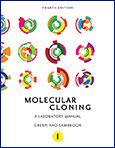
Photo from archive.org
The ten-eleven translocation (TET) family of enzymes were originally cloned from the translocation breakpoint of t(10;11) in infant acute myeloid leukemia (AML) with subsequent genomic analyses revealing somatic mutations and… Click to show full abstract
The ten-eleven translocation (TET) family of enzymes were originally cloned from the translocation breakpoint of t(10;11) in infant acute myeloid leukemia (AML) with subsequent genomic analyses revealing somatic mutations and suppressed expression of TET family members across a range of malignancies, particularly enriched in hematological neoplasms. The TET family of enzymes is responsible for the hydroxylation of 5-methylcytosines (5-mC) to 5-hydroxymethylcytosine (5-hmC), followed by active and passive mechanisms leading to DNA demethylation. Given the complexity and importance of DNA methylation events in cellular proliferation and differentiation, it comes as no surprise that the TET family of enzymes is intricately regulated by both small molecules and regulatory cooperating proteins. Here, we review the structure and function of TET2, its interactions with cooperating mutations and small molecules, and its role in aberrant hematopoiesis.
Journal Title: Cold Spring Harbor perspectives in medicine
Year Published: 2017
Link to full text (if available)
Share on Social Media: Sign Up to like & get
recommendations!